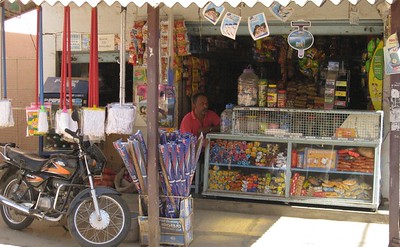Kapanlagi.com - Economy is an important sector that determines the progress of a country. Small and Medium Enterprises are one of the parties that play a role in maintaining the rotation of the economy. Small and Medium Enterprises are businesses run by the community on a small scale. Nevertheless, Small and Medium Enterprises have a significant impact on the economy.
The abbreviation for Small and Medium Enterprises is SME. Actually, there is no specific measurement for categorizing a business as a small-scale business. However, as reported by liputan6.com, the term Small and Medium Enterprises is usually measured based on net asset wealth, annual sales volume, number of employees, and so on.
In addition to the brief review above, there are still many interesting things that can be learned about Small and Medium Enterprises or SMEs. Therefore, you can read the following review that has been summarized from liputan6.com.
1. Characteristics of Small and Medium Enterprises

(credit: freepik)
As mentioned earlier, it is difficult to define Small and Medium Enterprises (SMEs) precisely. This is because the size or scale of a business can be considered relative, whether it is large or small. Nevertheless, we can still identify a business as an SME based on several existing characteristics.
The characteristics of SMEs are as follows:
1. Production or services are carried out with basic skills that are generally inherited.
2. Raw materials are usually abundant and easily obtained.
3. Business activities involve the participation of the community, especially those classified as economically weak, thus providing economic benefits.
4. Production or services are carried out using simple technology, often requiring technology transfer.
5. Small and medium enterprises can benefit the community by providing employment opportunities.
6. The products or services offered generally have a wide market potential. In fact, most SME products can also be absorbed in the local/domestic market, and there is also the possibility of penetrating the export market.
2. Classification of Small and Medium Enterprises

(credit: freepik)
In addition to having several characteristics, Small and Medium Enterprises also have several classifications. Each classification of Small and Medium Enterprises has its own characteristics. The classifications of Small and Medium Enterprises are as follows.
1. Livelihood Activities
Livelihood Activities is a form of classification of Small and Medium Enterprises that is one way to earn a living. Livelihood Activities are often found in the informal sector. Therefore, this type of SME is the most commonly found in Indonesia.
2. Micro Enterprise
One classification of Small and Medium Enterprises is micro enterprise. Micro Enterprise is a type of Small and Medium Enterprises that is still artisanal but has not shown entrepreneurial characteristics or principles in running its business.
3. Small Dynamic Enterprise
The next classification of Small and Medium Enterprises is small dynamic enterprise. SMEs classified as this type have entrepreneurial characteristics. In fact, some of them have implemented contract systems and received export and subcontracting jobs.
4. Fast Moving Enterprise
Fast Moving Enterprise refers to SMEs that have entrepreneurial spirit and will transform into Large Enterprises (LE).
3. Small and Medium Enterprises

(credit: freepik)
As discussed earlier, Small and Medium Enterprises (SMEs) are one of the drivers of the economy. SMEs are also small-scale businesses operated directly by the community. This means that any small business operated by the community can be called an SME.
In general, based on what exists in the community, SMEs can be categorized according to the field they are engaged in. The fields of Small and Medium Enterprises are as follows.
1. SMEs in the Culinary Field
Culinary is one of the business fields that seems to never die. In fact, there are more and more food variations that become trends and can be sold as business products. Therefore, the culinary field is still a favorite for people to start a business.
However, it needs to be understood that the culinary business is not only about taste. More than that, quality products must be supported by good management and promotion. With that, Small and Medium Enterprises in the culinary field can develop.
2. SMEs in the Agribusiness Field
Indonesia has long been known as an agrarian country. This can also be seen from the many businesses in the agribusiness field. Businesses in this sector are wide-ranging and have several types, such as agriculture, plantations, and animal husbandry.
3. SMEs in the Fashion Field
In addition to the culinary field, the fashion field also never lacks enthusiasts. Businesses in the fashion field also have a wide scope, not only clothes and pants, but also accessories, shoes, suits, and so on.
Brands play a significant role in developing businesses in the fashion field. Therefore, you can create your own brand and do manufacturing. In addition, there are currently many ways to start a fashion business. Starting from being a reseller to doing your own production.
4. SMEs in the Accommodation Field
Traveling to tourist destinations is one way to unwind. Lately, this activity also has many enthusiasts, making it a trend. As a result, the demand for accommodations also increases. Therefore, renting rooms or houses as accommodations can also be a business opportunity for people to earn income.
Those are some reviews about Small and Medium Enterprises, which is abbreviated as SMEs. Hopefully it is useful and can increase knowledge.
(kpl/psp)
Disclaimer: This translation from Bahasa Indonesia to English has been generated by Artificial Intelligence.















